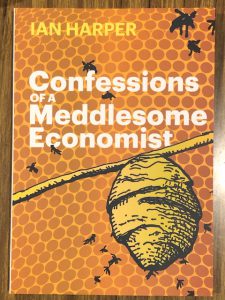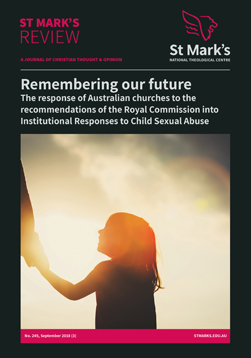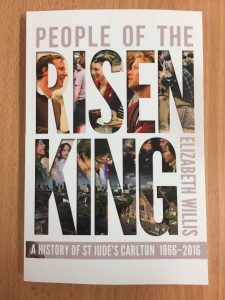Giving victims of abuse the courage to stand
Child ,Arise! is a privileged insight into the lives and challenges of sexual abuse survivors.
I met, apologised to, cried, prayed and sought to walk with survivors of child sexual abuse during my time as Bishop of Tasmania, 2000-2015. The suffering of survivors has affected me deeply: I struggle with vicarious traumatisation. It is somewhat embarrassing to speak of vicarious trauma because my suffering is but a pale shadow of that of survivors. Nevertheless, it is real and Jane Dowling through Child, Arise! has strengthened me.
Jane Dowling, a survivor of child sexual abuse, shares in vulnerability and hope, spiritual resources discovered in her own journey through suffering. Survivors, family members, friends, clergy and professional counsellors, all those who walk with survivors will benefit from this handbook.
The prayerful engagement with Scripture is clearly and beautifully shared. Here is a treasure of prayerful reflection on Scripture and an ongoing unfolding of God’s narrative. God’s resources are engaged to raise life from its deathbed of betrayal, of trust destroyed.
Jane does not detail her sexual abuse except to say that it occurred from early childhood to her mid-teens by a family relation and then during her teenage years by a Roman Catholic priest. Her abuse is not the focus of the handbook. The author’s purpose is to seek God and so to tell the story of the destructive consequences of her abuse, her suffering and survival, from God’s perspective.
At 21 years of age Jane Dowling entered an international Roman Catholic missionary community of prayer and ministry of the Bible in which she completed a theology degree. In her mid-twenties the trauma of her abuse erupted in pain and anguish, and through the two decade long quest for healing, the resource of praying with Scripture guided her quest and brought her life.
The vulnerability in the telling of her story, the prayerful listening to God’s voice and her decision to trust God in the living out of what is heard, usher the reader into spaces that both inspire and pose the challenge: Is my prayerful listening through the Bible engendering trust in God and personal courage?
This is a “handbook” to be dipped into, and its waters are deep; in particular, the second part of the book which looks at themes of suffering and pain from the trauma of childhood sexual abuse, and ways of gaining strength to stand to face them.
The first part of the handbook is a compilation of truths about God and humankind’s identity, dignity, purposes and strengthening. Listening to our personal story from the perspective of a loving God brings comfort and healing. Jane Dowling recaptures the power of the Word of God to change lives.
In the second part of the handbook the author shares her personal engagement with aspects of trauma such as hopelessness, lack of self-esteem, being harsh with herself, channeling anger for good, being set free from paralysis, and panic attacks.
A series of reflections using the simple following structure illustrates the author’s working through specific issues with God: a. naming the issue; b. reading Scripture; c. Praying the Scripture reading; d. The Scripture experienced in the author’s own life; and e. The Scripture experienced in your the reader’s life. These reflections provide a treasured sharing of Jane’s transformation through great pain. They are a rich resource for those of us experiencing pain.
Jane’s struggle and pain on the day of her private hearing with the Royal Commission into Institutional Responses to Child Sexual Abuse were immense. The fear that the abusing priest had instilled in her was overpowering. The anticipated re-traumatisation in retelling her abuse of some twenty-five years ago was overwhelming. Struggling to prepare herself to attend, Jane turned to her Scripture reading, Isaiah 43:1-3.
The third step, “Praying the scripture reading”, is facilitated by a number of questions specific to each reading. I found they aided my engagement with God.
Through the fourth step, “The Scripture experienced in my life”, we enter into the head and heart of the author and her working through of Scripture to a place of seeing her story from God’s perspective: “You will not be burned, the flames will not consume you.” Jane’s experience is too tender to insert a quote here: it needs reading in context and I think this is a strength of the handbook: this book is made for working! Hence the fifth step: “Were you able to experience the Scripture reading in your life today? If so, how did this happen? You may like to write down your account.”
This handbook is a testimony to the power of God’s transforming grace through the prayerful reading of the Bible while in deep pain and suffering.
Importantly, the author affirms that without the support of family, psychologist, spiritual advisor, health professionals and the organisation ASCA (Adults Surviving Child Abuse), she would not have reached the day of her private hearing. The role of counsellors, family, friends and community are clearly affirmed in the author’s struggle for survival. The emphasis on a range of supportive resources is repeated throughout the handbook and underlines the book’s contribution as a “spiritual” handbook. All of these resources are to be marshalled for the survivor to stand again, scarred but not broken: “Child, arise!”.
For those of us who have struggled to empathise with survivors of sexual abuse, this is a privileged insight into their life and challenges. It educates and enhances our empathy.
A relationship with God prior to abuse is a rich resource in dealing with the trauma of abuse. This book alerts us to deepen our discipleship and in particular with the prayerful reading and living of God’s Word, the Bible.
This is an outstanding and multifaceted book. Little wonder it was awarded the Australian Cristian Book of the Year 2016.
Child, Arise!: The Courage to Stand: a spiritual handbook for survivors of sexual abuse by Jane N. Dowling, (David Lovell Publishing Melbourne Australia 2015 $29.99). Winner, Australian Christian Book of the Year 2016.
This review was published here. http://tma.melbourneanglican.org.au/reviews/child-arise-070317



 to the findings and recommendations of the
to the findings and recommendations of the 
